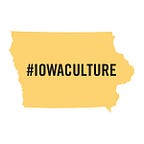History With Humanity: American Indian Burials in Iowa
“When a man dies he should be buried and left in peace.”
These were the sentiments of Harvey Major, a man with Ojibwe ancestry and acting president of the Des Moines chapter of the American Indian Movement in 1972. His words reflected shifting attitudes at the time about American Indians, both among the Indigenous community itself and the general public. He advocated that all human remains be treated with dignity at a time when American Indian remains were still part of many museum displays.
Some, in fact, were still on display 50 years ago at the State Historical Museum, in its former location at 1112 E. Grand Ave. The local chapter of the American Indian Movement sought to end the exhibition of the remains of five Indigenous people, including a woman and an infant. The debate that followed challenged museum orthodoxy and ultimately reflected a recognition of equal treatment of all cultures.
The human remains were found when workers moved earth at the future site of Crestview Acres at Ninth Street and Ashworth Road in West Des Moines. The Des Moines Register reported on July 24, 1963, that State Historical Department staff and volunteers carefully removed the remains from the ground, placed them in a station wagon and took them to the museum, where they were placed on display two years later. Jack Musgrove, the museum’s curator, explained in the article that the exhibit had educational value because it offered a rare opportunity for researchers to better understand Indigenous cultures. Over the next few years, museum staff and volunteers continued to collect human remains and burial items.
By 1970, however, Musgrove had stopped collecting artifacts and remains from Indian gravesites. When a location with three burials was identified in Lee County that spring, it was reported that Musgrove studied the site and reburied the skeletal remains. This became a standard for investigative work conducted by the Office of the State Archaeologist at the University of Iowa as well as the anthropology department at Iowa State University. Faculty members at both institutions led the scientific investigations.
But others in Iowa continued to remove remains. In 1970 an experienced but nonprofessional archaeologist sent remains from Hamilton County for display at Iowa Central Community College in Fort Dodge. In 1971, when the Iowa Highway Commission was working near Glenwood, workers discovered the remains of 26 European-American pioneers, which were reburied in a nearby cemetery, as well as the remains of a Native American woman and her infant child, which were shipped to the Office of the State Archaeologist in Iowa City. When one of the highway commission employees told his wife, Maria Pearson, a woman of Lakota ancestry, she went to the State Capitol and demanded a meeting with Gov. Robert Ray, who listened to her concerns.
Around the same time, others worked to re-inter American Indian remains on display in museums. In 1972, while the American Indian Movement was raising awareness about American Indian issues across the country, the group’s Des Moines chapter, led by Harvey Major and Carl DeCora, requested that the human bones at the State Historical Museum be removed and carefully reburied. Musgrove, the curator, initially balked because he, like many other museum curators at the time, believed that the public benefited from seeing the remains in the museum’s collection.
Gov. Ray showed characteristic empathy and judiciousness. He listened to multiple perspectives, then asserted that “what is highly educational to some is offensive to others.” He complimented Musgrove for his preservation and exhibition efforts but appreciated the spiritual and human rights concerns raised by Pearson and the American Indian Movement. Ray eventually requested the removal of the display and called for further study of the options.
In the moment, advocates for societal change are often labeled as troublemakers. If it weren’t for Iowans like Major, DeCora, Pearson and others, Iowa would not have led the way in protecting American Indian remains and burials.
The materials from West Des Moines were eventually transferred to an affiliate American Indian nation and reburied with a traditional ceremony. The Iowa Burials Protection Act of 1976 was the first of its kind in the country and led the way for federal legislation 14 years later. Iowans with Indigenous ancestry pushed Iowa to lead the nation in holding cultural and political leaders accountable to principles of basic human dignity.
— Leo Landis, state curator for the State Historical Society of Iowa, and Jerome Thompson, state curator emeritus.
